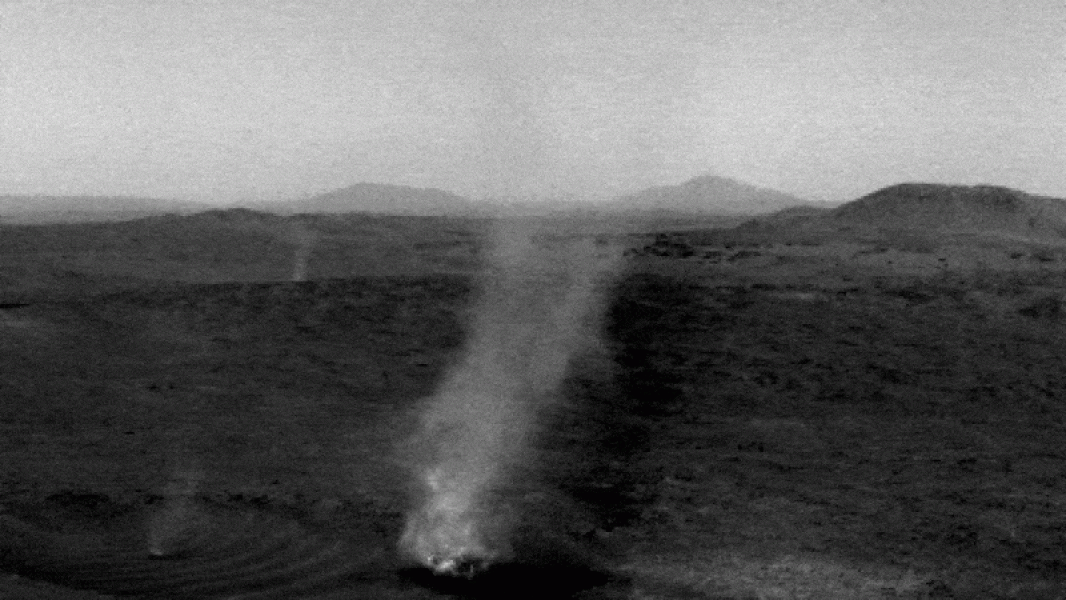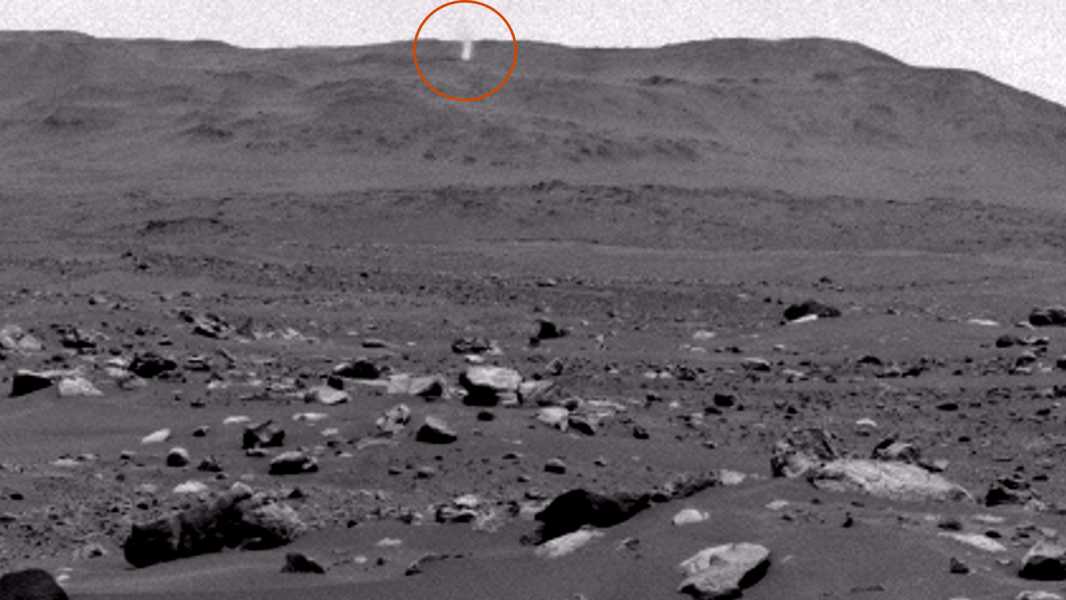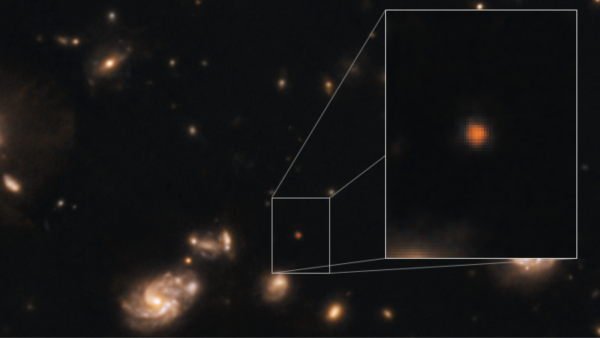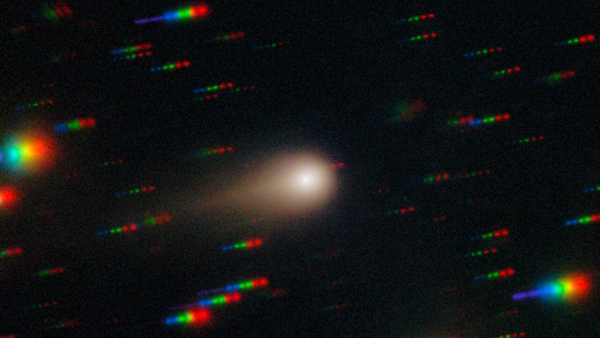
NASA's Perseverance rover captured the moment a small dust devil (front left) collided with and merged with a larger one (right) on January 25. The rover was about half a mile away from the event. (Credit: NASA/JPL-Caltech/SSI)
NASA's Perseverance rover recently witnessed an unusual example of Martian cannibalism: it captured a large, swirling “dust devil” consuming a smaller one on the Red Planet.
The robotic roamer captured the spectacular moment on January 25, the 1399th sol (Martian day) of its mission. The video shows a smaller vortex, barely visible in the footage, following the larger vortex (moving from left to right) before getting too close and getting sucked into the larger vortex. The rover was about 0.6 miles (1 km) from the vortexes at the time.
The larger vortex is estimated to be about 210 feet (65 meters) wide, while the smaller one appears to be only 16 feet (5 meters) in diameter. It is unknown how tall they were, as their height was beyond the rover's visibility. However, Perseverance's previously recorded vortex — and with a width nearly identical to the larger vortex — was thought to be about 1.2 miles (2 kilometers) tall, or about five times the height of the Empire State Building.
“Convective vortices known as dust devils can be quite dangerous,” said Mark Lemmon, Perseverance’s senior scientist at the Space Science Institute in Boulder, Colorado, in a NASA statement. “These mini-tornadoes move across the surface of Mars, kicking up dust and reducing visibility around them.”

This dust devil, captured by Perseverance on August 30, 2023, was the same width as the larger one in the new video and was estimated to be about 1.9 kilometers (1.2 miles) tall.
Collisions between two dust devils are extremely rare, but when they do, there are two possible outcomes: “If two dust devils collide, they can either destroy each other or they can merge, with the stronger one consuming the weaker one,” Lemmon said.
“If you feel sorry for the little swirl in our latest video, you might take some comfort in knowing that the larger culprit likely met his fate a few minutes later,” he added. “Dust devils on Mars only last about 10 minutes.”
Based on previous observations, the largest vortex likely rotated at a maximum speed of more than 10 mph (16 km/h).
Martian Dust Devils
Dust devils are formed by warm air rising from the sun-heated surface of the planet. As the air rises, cooler air rushes down to replace it, and this air then warms up and rises again. This process creates a column of rising air that begins to spin faster and faster. This phenomenon is also observed on Earth, although the results are usually less dramatic.
“As the incoming air rises in the column, it accelerates, like a figure skater bringing his arms in toward his body,” NASA officials wrote in a statement. “The air rushing in also stirs up dust, creating a dust devil.”
Sourse: www.livescience.com





